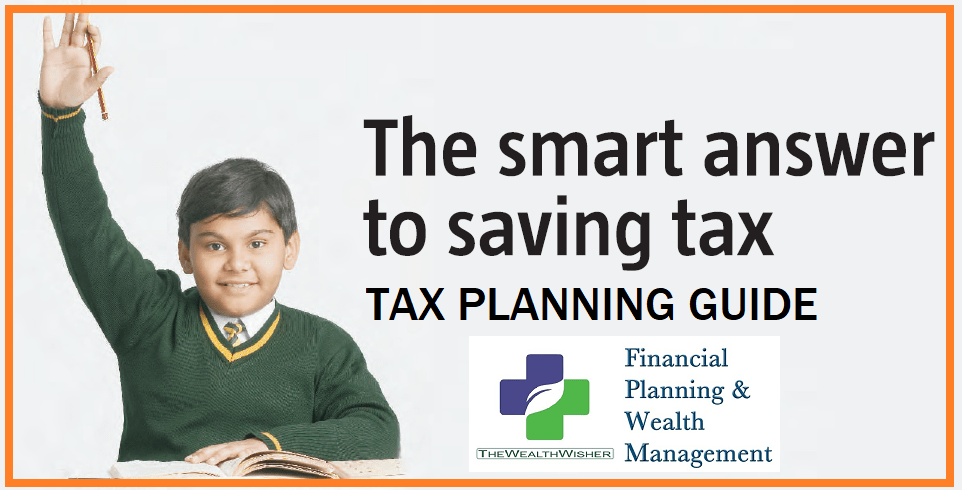If you are a salaried person, this is the time when you are going to or have submitted your income tax proofs. We at WealthWisher thought to make and share an Ebook on Tax Planning Guide 2017 2018 PDF format.
Our endeavor is to help you plan your tax savings through right products as tax planning investment forms a substantial part of the portfolio. This portfolio is aligned with your future goals.
Also, we want to save you from the hurry that is often used for mis-selling by marketers.
And, if you do not make these investments, get ready for significant salary cuts in the last quarter of the financial year (January to March).
This post includes the free downloadable – Tax Planning Guide 2017-18 |
Important Considerations in Tax Planning
Do you need additional Investments?
 Section 80 C Allows deductions on a number of categories, some of which you may be already investing in Life Insurance Premium, Children’s Tuitions, Contributions to Employees Provident Fund (EPF) and Principal Repaid on a home loan. Only if there is any room left you should invest otherwise there are other investment options. The ceiling for Section 80 C deduction is 1.5 lakh only.
Section 80 C Allows deductions on a number of categories, some of which you may be already investing in Life Insurance Premium, Children’s Tuitions, Contributions to Employees Provident Fund (EPF) and Principal Repaid on a home loan. Only if there is any room left you should invest otherwise there are other investment options. The ceiling for Section 80 C deduction is 1.5 lakh only.
Download Free Book on ELSS – Details & Comparison
Asset Allocation
Tax saving investment is not random picking up of funds or schemes. They represent a certain asset class. PPF, EPF, NSC & Tax Saving Bank FDs come under Debt category.
Whereas ELSS (Equity linked Savings Fund) are pure equity schemes. There are schemes which are investing in both like NPS (National Pension Scheme). So the debt component of NPS should be added to debt part of the portfolio and equity to equity part. Investment should be done in proper accordance with Asset Allocation fixed after risk assessment.
Health Insurance Premium
The premium you pay on mediclaim and critical illness policies is also entitled to a deduction under Section 80 D. The amount of health cover you buy should be chasing the limit or by the number of tax benefits available. It should be in line with your & family health care needs.
NPS is a must – But see if suits you
An additional deduction of 50000 is available under Section 80 CD (1B) for investments in the National Pension System (NPS). Weigh its pros and cons before investing.
I feel it as a good investment tool as it helps plan retirement which in India is not much thought about. Even if some plan for it but they priorities other goals like kids education before retirement. NPS is a way to forced retirement savings.
What to Completely Avoid?
- Insurance policies other than the term plan if required. Please learn to say “No” to friends or known who are Life Insurance Agents and look at you as a scapegoat. It’s a complete NO to ULIPS, Moneybacks, Policy for Child Education or Annuity (Pension).
- Last minute hurry: If you leave your tax-related investment for the last moment, you may end up investing in the wrong products. Avoid the ones that force you to commit a large amount, which may be beyond your capacity, on an ongoing basis.
- Leveraging or taking a loan to invest. It’s a bad idea and better to pay the tax than paying interest and spoiling monthly budget.
Wondering about?
New Changes in 2017?
New Slabs of Income Tax?
Understanding basics of Income Tax?
What are the components of Salary?
What is considered in Other Income?
Which income is fully taxable, partially taxable & tax-free?
Which ITR form to use in 2018?
What are the deductions available?
Which Sections of Income Tax Act provide Deductions, Rebate & Exemptions?
Comparison of different tax saving instruments?
ALL Question Answered – ONE EBOOK – Download your FREE TAX PLANNING GUIDE.










